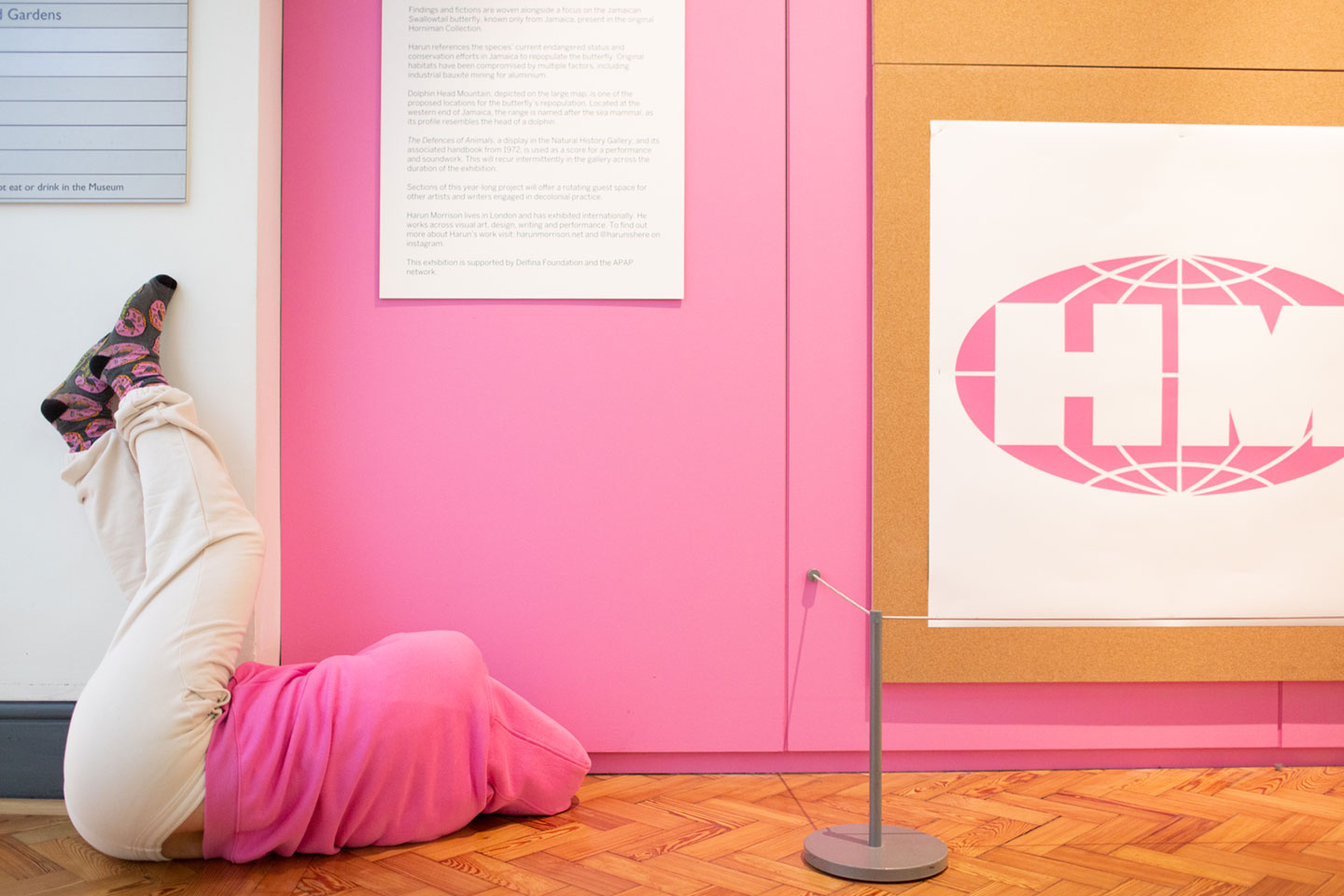Dolphin Head Mountain
Dolphin Head Mountain is a shifting display by London based artist Harun Morrison. It shares his immersion in the ‘backstage’ areas of the Museum including the collection stores, piles of out-of-print publications, and curators’ offices.
Incidental findings and fictions are woven alongside a focus on the Jamaican Swallowtail Butterfly, present in the original Horniman Collection.
Harun references the species’ current endangered status and the conservation efforts to repopulate the butterfly in nearby substitutes for its original environment. These have been compromised by multiple factors, including industrial bauxite mining for aluminium.
Dolphin Head Mountain is one of the proposed locations for the butterfly’s repopulation. It is given its name by its similarity to the sea mammal in Jamaica’s Western Mountain Range.
Explanative Museum literature in the Natural History Gallery and, ‘Defences of Animals’, a gallery publication from 1972, is used as a score for a performance and soundwork. This will recur intermittently around the collection over the duration of the exhibition.
A section of the year-long display will be a rotating guest space for other artists and writers engaged in decolonial practice. The current guest contribution is a series of four drawings titled, ‘Exodus’ (2022), by Eve Morrison.
Live performance
‘Defences of Animals’ (duration 30 mins) will be performed across the Natural History Gallery on various dates throughout the duration of the display.
- Tuesday 9 May 3.45pm, 4.15pm and 4.45pm
- Friday 12 May 11am, 11.30am, 12noon and 12.30pm
- Sunday 14 May 12noon, 12.30pm, 1pm, 1.30pm

© James Allan
This display is supported by Delfina Foundation and the APAP network.